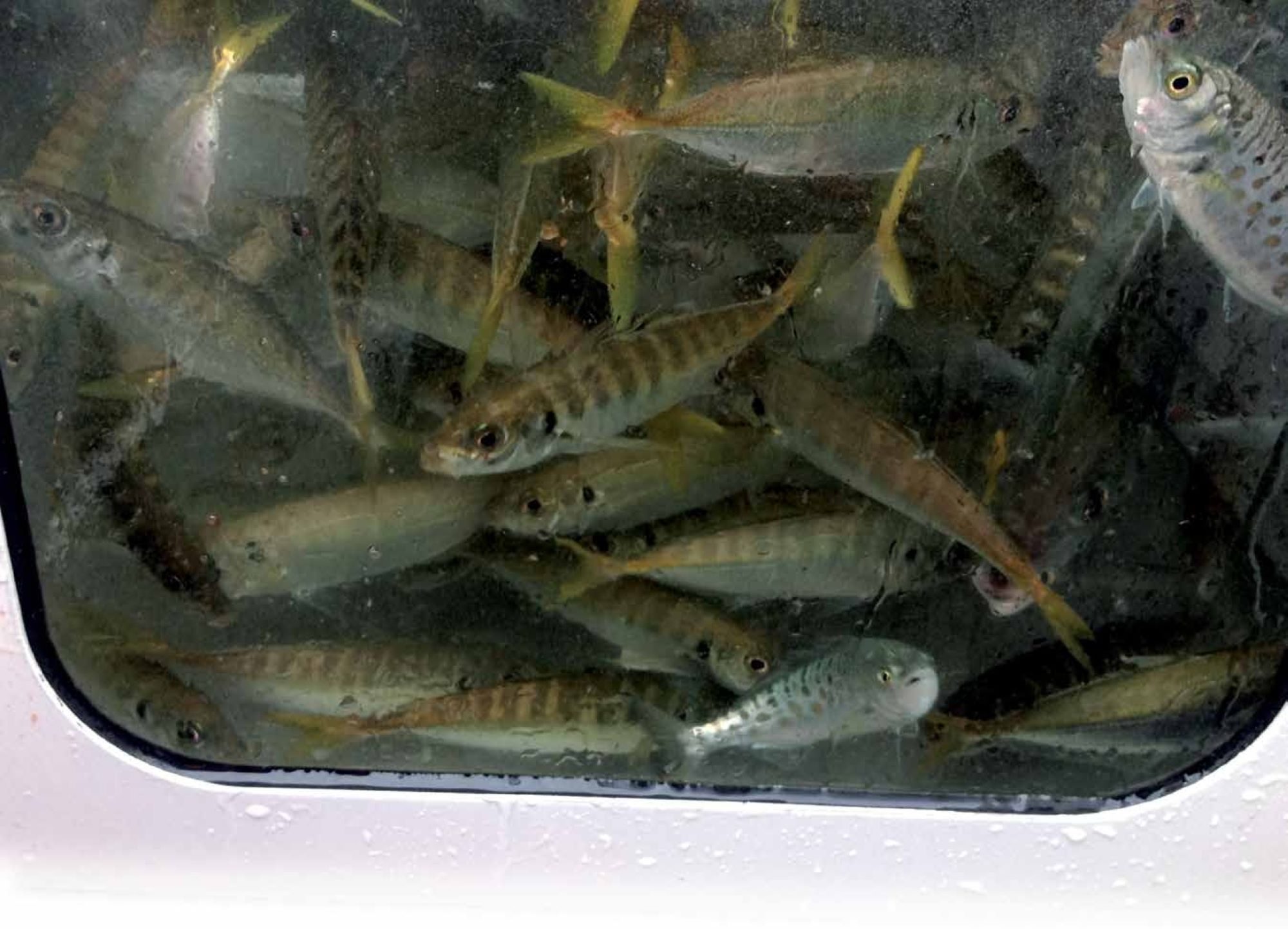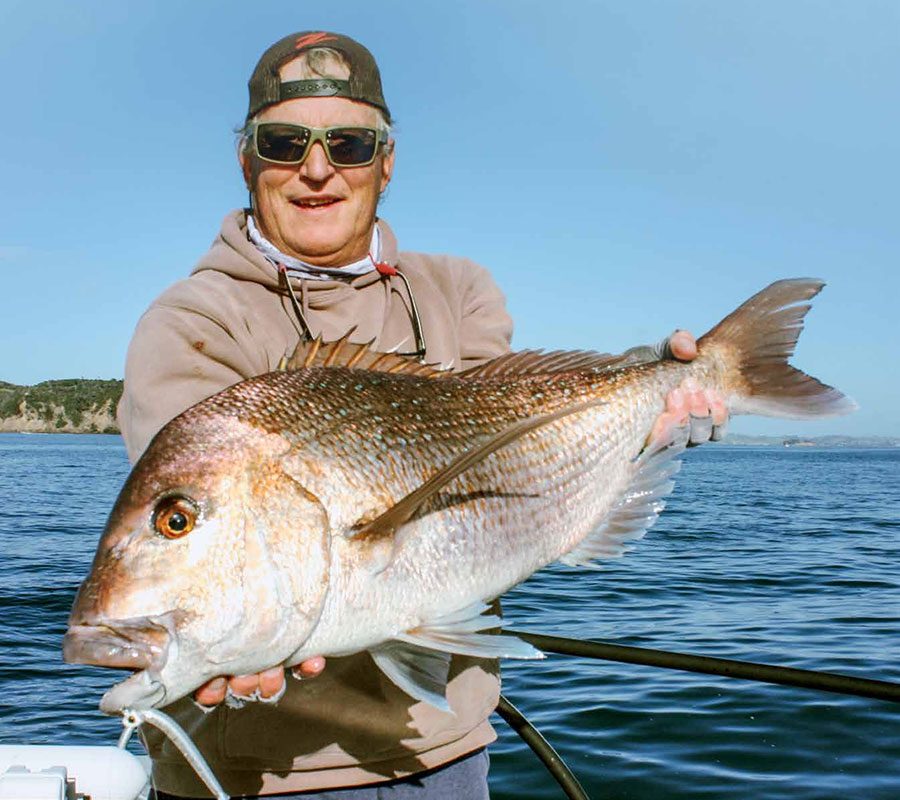

A finesse approach to fishing soft baits can pay dividends, especially in heavily-fished areas with educated fish.
As I discussed last month, reducing the size of my soft plastic baits and the power of my soft-plastic tackle continues to pay dividends and I believe it is the way of the future. By allowing more subtle presentations, it takes full advantage of the fishing on offer, even in hardfished areas, and best of all, it is heaps of fun!
The right tackle is the secret though, since it must work together to present fish with a small but very enticing offering. So, briefly, for those who missed last month’s issue, anglers should use a long (7’6”-8’6”/2.3–2.6m) spinning rod rated for 3-5kg line, paired to a 2000-2500 size reel loaded with 3-5kg braid and 2.5-3m of 12lb (5.5kg) fluorocarbon leader. Tie a 3-4cm soft-bait of your brand of choice, fitted to a jig-head weighing between 3/16 and 3/8oz (5.3 to 10.6g) armed with a sharp 1/0-2/0 hook.
Now let’s look at how we use this light gear to attract more bites from a wider range of fish species in all sizes – and get a much better hook-up rate too.

CASTING ANGLES
The jig-heads we’re using are unusually light, but that’s part of their successful formula, as many bites occur while the lure is descending slowly, even in water over 20m deep. The trick, therefore, is to find a casting angle that allows the small, lightly weighted lure to sink to the bottom, while at the same time letting you maintain good contact with the lure throughout its descent.
This can be tricky! The way the tidal flow and wind interact with each other creates infinite variety in drift speeds and directions, affecting the lure’s descent rate. Get the casting angle wrong and your lure will either hold up in the water column, or boat and lure come together so quickly (hereby imparting slack line) that good lure contact is difficult or even impossible to achieve.
It’s best to think of tidal flow as a huge, slow-moving river. Provided your boat and soft-bait lure drift along together in the same flow, the weight of the lure will allow it to sink through the water column. However, if the boat is held up or slowed by breezes from conflicting directions, drift speed and direction no longer align with the tidal flow’s so the jig-head ends up fighting the current, preventing it from sinking.
Here are my basic casting angle guidelines:
• When wind direction and tidal flow are aligned, or there is no wind: Cast up ahead of your boat’s drift direction, but slightly to one side of centre so your line can slip past the boat as it drifts down tide. This is especially important in water depths over 12m and whenever the current is reasonably strong.
• When the wind direction and tidal flow conflict: Make experimental casts out to the side of the boat; if your line sweeps around and begins to trail too quickly, cast further back and see if the result is better. As a last resort, increase the weight of the jig-head, but the faster the lure descends, the less time fish have to see it and move into position to take it.
MAINTAINING CONTACT
After casting, the primary objective is to maintain good contact with the lightly-weighted lure. We want just the slightest dip of slack braid from the rod tip but no more. That little bit of slack line between the rod tip and the water’s surface registers bites far better and more immediately than waiting to feel bites through the rod – the slightest tightening or slackening in the ‘dip’ can indicate a bite, bites you’d miss with too much slack line. So, during the descent, wind any extra slack out of the braid, and keep the rod pointing along the line at all times ready to react to a bite.
FURTHER BENEFITS OF WINDING
As well as controlling excessive line slack, a quick wind of the reel’s handle is the best way to respond to any sudden jerks or jiggles in the line. Also wind if the line whips tight or suddenly slackens – that’s a biting fish.
Winding in response to line movement achieves two things. Firstly, if a fish is biting it tugs on a lure held in its mouth, encouraging the fish to clamp down harder to prevent its meal ‘escaping’. Secondly, if the fish has already rejected the soft bait, or else you’ve pulled from the its mouth, winding in some line makes the bait spring to life. This can often prompt the fish (or its buddy) to grab the soft bait again.
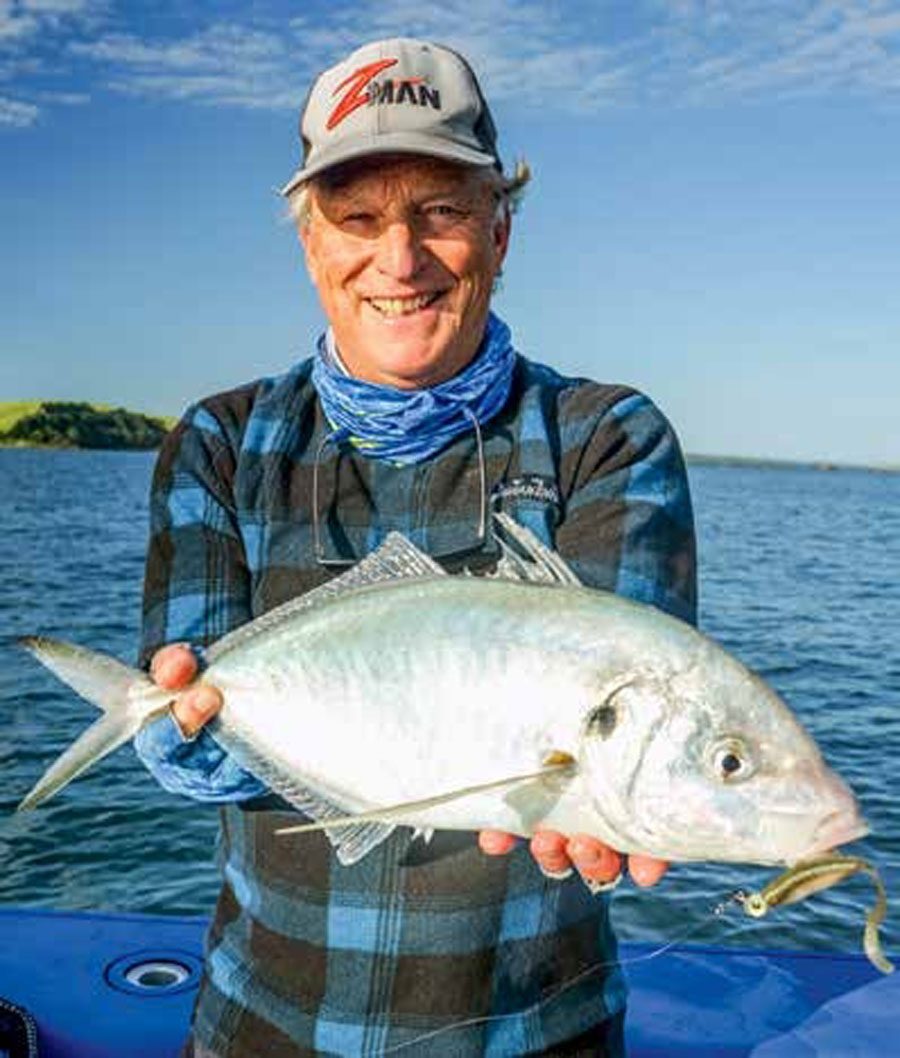
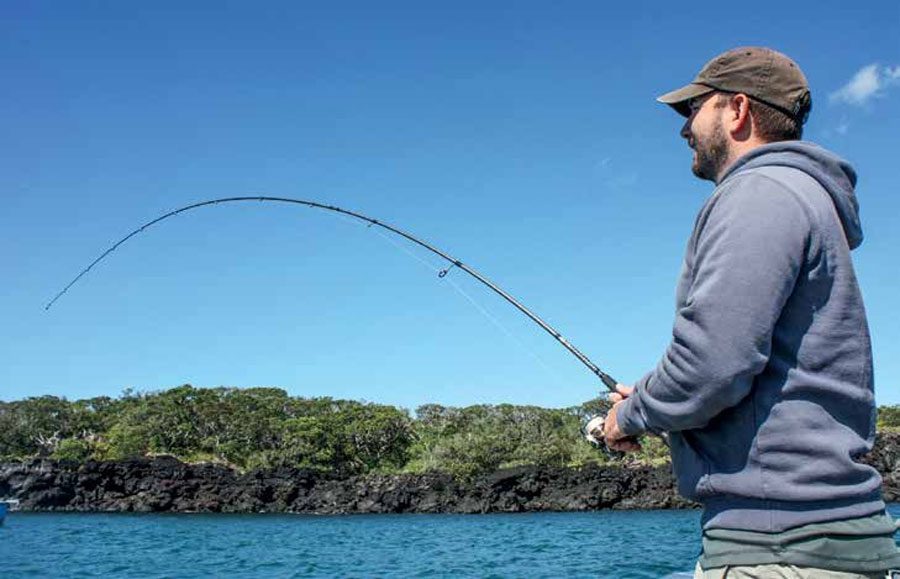
HOORAY FOR SMALL HOOKS!
The biggest advantage of 1/0-2/0 jig hooks is that they don’t protrude far from the bodies of small soft baits, so when a fish bites, the plastic tends to be engulfed hooks and all.
Small hooks are also easier to set – just a firm lift of the rod usually does the trick.
These two aspects of fishing small soft baits especially excite me, since they result in a very high bite to hook-up ratio – around 80% for me.
And because there’s no need to make hard strikes as you typically would using heavier soft-bait rods, baits are ripped from between a snapper’s sharp, clenched teeth less often, resulting in less soft bait damage, so they last much longer.
However, smaller hooks bend, straighten or break more easily than bigger ones, so don’t set the reel’s drag too tight. Preserving hook integrity is also one of the reasons using a flexible, forgiving rod and 12lb leader is recommended – they work well together to maintain a secure hook hold by preventing such relatively weak hooks distorting.
For similar reasons, discuss what you plan to do if you hook a particularly large fish (and you will!). Having someone jump smartly onto the helm to give chase, thereby reducing the length of line in the water and improving the line angle between angler and fish, will often be the difference between success and failure. This is especially true over a rocky bottom.
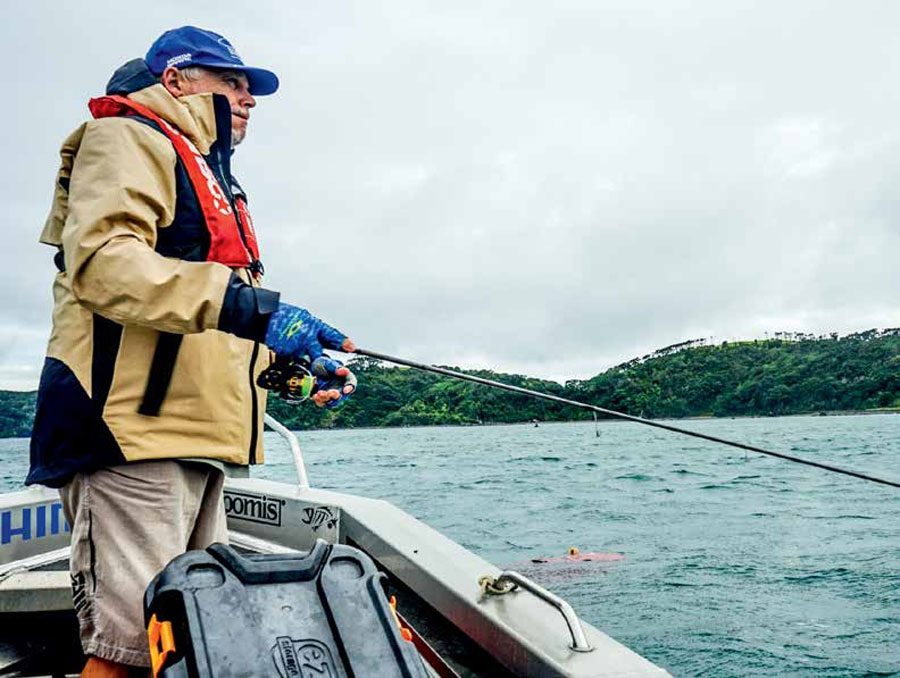
AFTER THE DESCENT…
Although there will be days where virtually every bite occurs on the way down, at other times you might have to entice fish to bite by retrieving the soft-bait back towards the boat – or by dragging it behind the drifting boat.
In both cases, try to animate the lure with small, jiggling movements, rather than big sweeps and jerks. Those more subtle movements, interspersed with numerous pauses, better imitate how small, injured fish behave, triggering predators to bite.
Respond to any unusual line movements with a brisk wind of the reel’s handle – it prompts fish to commit to the bite, removes any slack line, and makes a solid hook-up more likely.
Wheeeee – listen to that drag sing! BNZ




